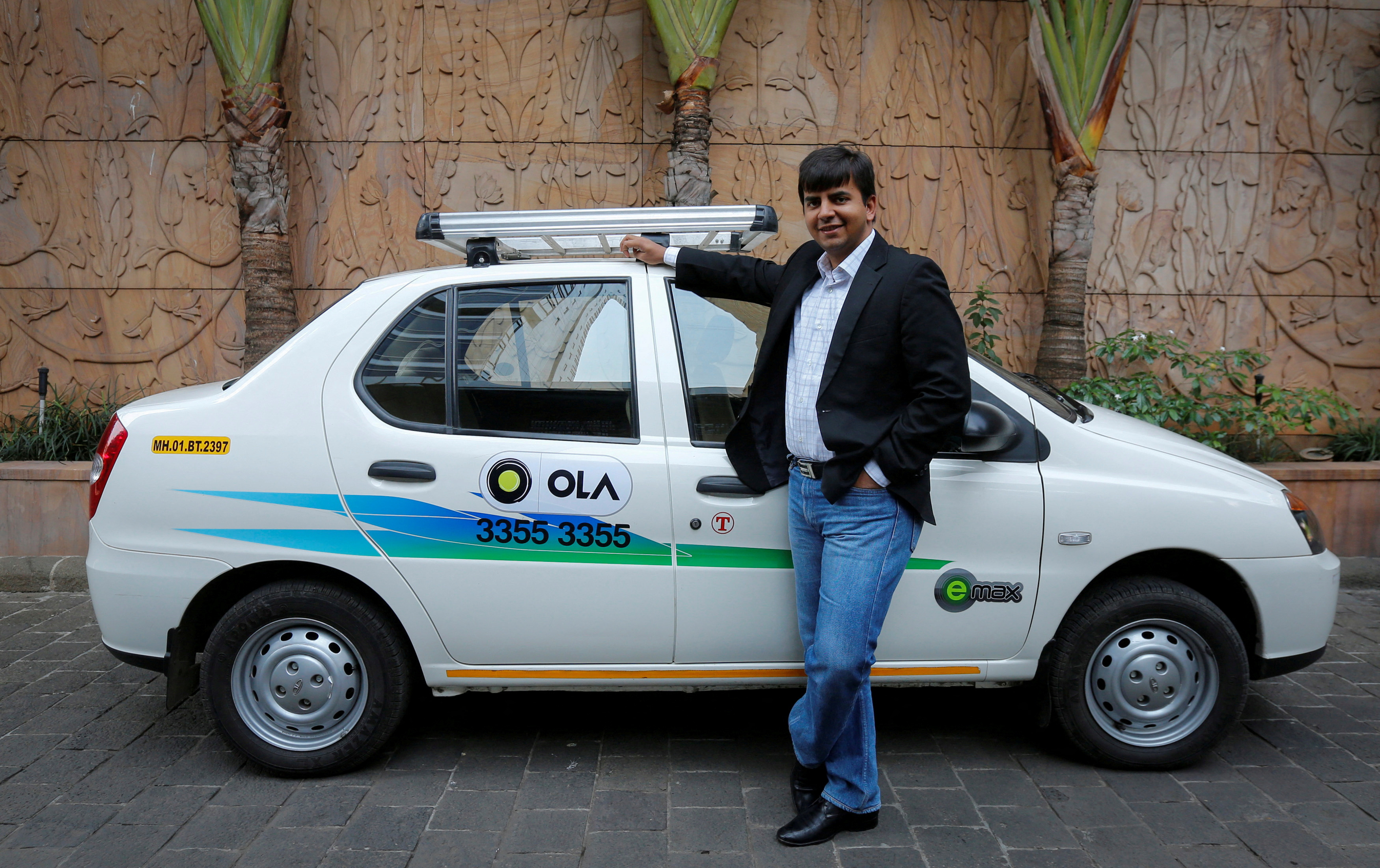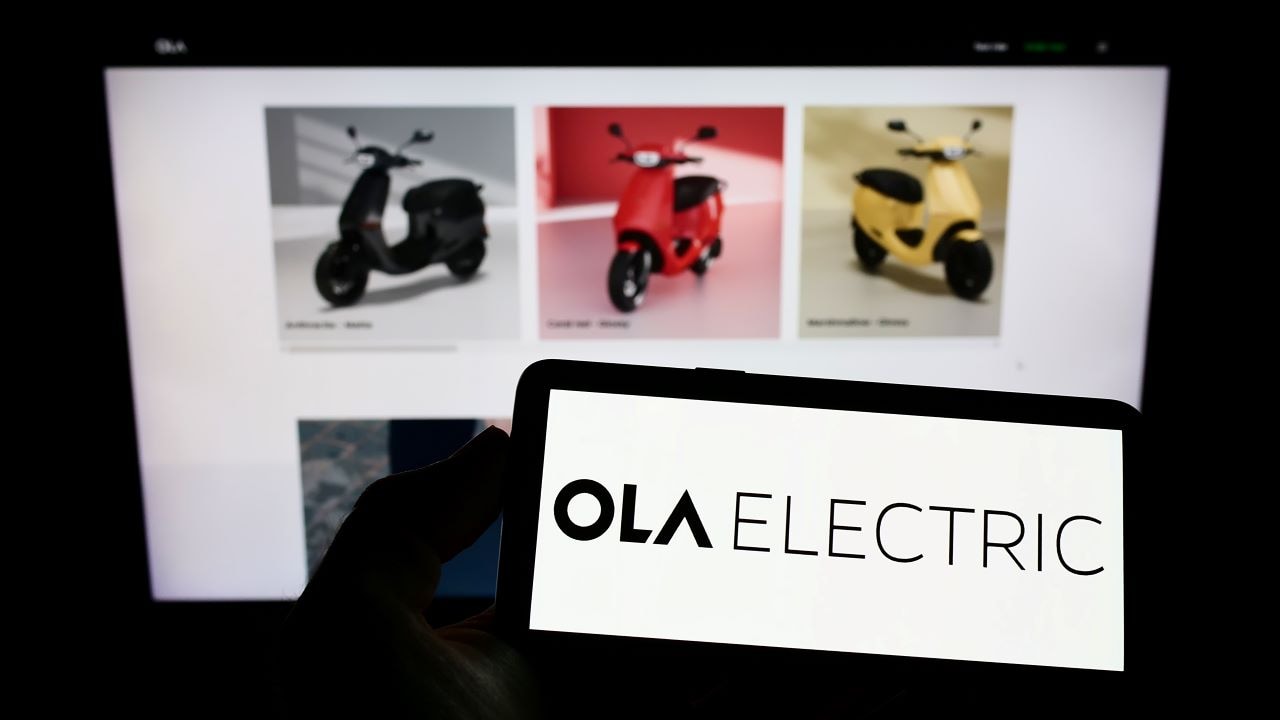A Detailed Analysis Of Ola India’s One Of The Most Successful Unicorn in 2024: Past, Present & Future

How It Started
Ola, one of India’s leading unicorn startups, was founded by Bhavish Aggarwal and Ankit Bhati in December 2010. The genesis of Ola began when Aggarwal, an IIT Bombay alumnus, encountered a frustrating experience while trying to rent a car for a trip. This experience led him to realize the inefficiencies and lack of reliability in the car rental market in India. Recognizing an opportunity, he partnered with his college friend, Ankit Bhati, to create a technology-driven solution to address these issues.
The duo launched Ola Cabs in Mumbai with a vision to provide a seamless and convenient transportation option for urban India. They started by aggregating cab drivers and car owners onto a single platform, allowing customers to book rides through a simple mobile application or website. This innovative approach quickly gained traction as it addressed a significant pain point for both drivers, who lacked a steady stream of customers, and passengers, who faced difficulties in finding reliable transportation.
Ola’s initial operations were modest, with a small fleet of cabs, but the company rapidly expanded its services to other major cities in India. By leveraging technology, Ola introduced features such as real-time tracking, online payments, and a rating system for drivers, which enhanced the overall user experience.
In its early stages, Ola secured funding from prominent investors, including Tiger Global and SoftBank, which enabled it to scale its operations and innovate further. The company diversified its offerings by introducing various ride categories, from budget to luxury options, and ventured into electric vehicles and bike rentals.
Today, Ola is not only a dominant player in India’s ride-hailing market but also operates in several international markets, continuing to evolve and adapt to the dynamic transportation landscape. The entrepreneurial journey of Bhavish Aggarwal and Ankit Bhati with Ola stands as a testament to the power of innovation and technology in transforming traditional industries.
List Of Founders & Cofounders, their share-holding and their profiles
Ola, one of India’s leading ride-hailing unicorn startups, was founded by Bhavish Aggarwal and Ankit Bhati in December 2010. Here’s a detailed look at the founders, their shareholding, and their profiles:
Founders and Co-founders
Bhavish Aggarwal
- Role: Co-founder and CEO
- Profile: Bhavish Aggarwal, born on August 28, 1985, in Ludhiana, Punjab, completed his bachelor’s degree in Computer Science and Engineering from the Indian Institute of Technology (IIT) Bombay in 2008. Before founding Ola, he worked at Microsoft Research, where he filed two patents and published three papers in international journals. His vision for Ola was to create a seamless mobility experience for India, leveraging technology to solve the country’s transportation challenges.
- Shareholding: Bhavish Aggarwal holds a significant stake in Ola, although exact figures are not publicly disclosed due to the private nature of the company. As the primary founder and CEO, his shareholding is substantial, giving him considerable control and influence over the company’s direction.
Ankit Bhati
- Role: Co-founder and Former CTO
- Profile: Ankit Bhati, born on October 7, 1986, in Jodhpur, Rajasthan, is a graduate of Mechanical Engineering and an M.Tech in CAD and Automation from IIT Bombay. Ankit’s technical expertise and innovative thinking played a crucial role in building the robust technological infrastructure that Ola is known for. Under his leadership as CTO, Ola developed its driver and customer platforms, ensuring smooth operations and scalability.
- Shareholding: Ankit Bhati, like Bhavish Aggarwal, holds a significant stake in the company. Although he stepped down from his day-to-day role in 2019, he remains a substantial shareholder.
Shareholding and Company Growth
Ola has undergone several funding rounds from prominent investors such as SoftBank, Tiger Global, and Tencent. This external funding has diluted the founders’ ownership over time, but both Bhavish and Ankit retain significant stakes that reflect their founding roles and contributions. Their exact shareholding is confidential, aligning with Ola’s status as a privately held company. The founders’ vision and leadership have been instrumental in Ola’s growth into a major player in the Indian and international ride-hailing markets, now expanding into electric mobility and other ventures.
List of Funding Rounds
Ola, one of India’s leading unicorn startups, has secured substantial funding over multiple rounds to bolster its growth and expansion in the competitive ride-hailing market. Founded in December 2010 by Bhavish Aggarwal and Ankit Bhati, Ola has attracted numerous investors, leading to a significant inflow of capital.
- Seed Round (April 2011): Ola’s journey began with a seed funding round of $500,000 from angel investors including Rehan Yar Khan and Anupam Mittal, which helped establish its initial operations.
- Series A (April 2012): Ola raised $5 million from Tiger Global Management, marking its first major institutional investment. This funding was pivotal in expanding its operations beyond Mumbai to other major cities.
- Series B (November 2013): Tiger Global Management continued its support with a $20 million investment. This round was crucial for scaling up Ola’s technology infrastructure and enhancing customer service.
- Series C (July 2014): Ola secured $41.5 million in a round led by Steadview Capital and Sequoia India, enabling further expansion and market penetration.
- Series D (October 2014): SoftBank joined as a major investor, leading a $210 million funding round. This infusion of capital was aimed at diversifying Ola’s services, including the introduction of Ola Mini and Ola Prime.
- Series E (April 2015): Ola raised $400 million, led by DST Global, which was instrumental in expanding its footprint to over 100 cities and launching new services like Ola Share and Ola Café.
- Series F (November 2015): A massive $500 million round led by Baillie Gifford, Tiger Global, and SoftBank, focused on deepening Ola’s presence in the Indian market and improving its technological capabilities.
- Series G (October 2017): Ola raised $1.1 billion from Tencent Holdings and SoftBank, marking one of the largest funding rounds in Indian startup history. This funding facilitated Ola’s foray into the international market, starting with Australia and New Zealand.
- Series J (March 2019): Ola secured $300 million from Hyundai and Kia Motors, focusing on electric vehicle initiatives and creating a robust EV ecosystem in India.
- Series J Extension (July 2019): Ola continued its Series J round, raising an additional $50 million from Hong Kong-based hedge fund Steadview Capital, ensuring sustained growth and innovation.
Throughout these funding rounds, Ola has strategically leveraged investor capital to enhance its service offerings, expand into new markets, and invest in cutting-edge technology. These investments have cemented Ola’s position as a dominant player in the Indian ride-hailing industry.
Total List Of Investors
Ola, one of India’s leading ride-hailing unicorn startups, has attracted a significant amount of investment from various high-profile investors since its inception. Founded in 2010 by Bhavish Aggarwal and Ankit Bhati, Ola has grown rapidly, securing its place among the top unicorn startups in India. Here is a comprehensive list of key investors who have contributed to Ola’s growth:
- SoftBank Group: SoftBank, through its Vision Fund, has been one of the largest investors in Ola. The Japanese conglomerate has poured in multiple rounds of funding, making it a major stakeholder in the company.
- Tiger Global Management: This American investment firm is known for backing high-growth technology companies. Tiger Global has been an early and consistent investor in Ola, participating in several funding rounds.
- Tencent Holdings: The Chinese multinational conglomerate has also invested in Ola, providing not just capital but also strategic insights from its experience in the technology and mobility sectors.
- DST Global: Founded by Yuri Milner, DST Global is another significant investor in Ola. The firm has been involved in various funding rounds, helping Ola expand its services and market presence.
- Steadview Capital: An investment firm focusing on long-term growth, Steadview Capital has invested in Ola, supporting its endeavours to innovate and capture a larger market share.
- Matrix Partners India: As an early-stage investor, Matrix Partners played a crucial role in Ola’s early growth and development, providing both capital and strategic guidance.
- Sequoia Capital India: Known for its investments in technology companies, Sequoia Capital has been a part of Ola’s funding journey, contributing to multiple rounds and helping the company scale.
- Temasek Holdings: The Singaporean investment company has backed Ola, leveraging its global network and resources to assist in Ola’s international expansion plans.
- Artemis Ventures: Another notable investor, Artemis Ventures has contributed to Ola’s funding, supporting its technological advancements and market expansion strategies.
- Sailing Capital: This Hong Kong-based private equity firm has also invested in Ola, aligning with its mission to revolutionize transportation in India and beyond.
These investors have collectively helped Ola raise substantial capital, enabling the company to expand its services, improve its technology, and maintain a competitive edge in the ride-hailing industry. Their support has been instrumental in Ola’s journey from a startup to a leading unicorn in India.
Valuation As Of June 2024
As of June 2024, Ola, one of India’s leading ride-hailing companies, boasts a significant valuation in the highly competitive market. The company’s valuation has reached approximately $12 billion, reflecting its strong position and continued growth within the industry. Ola’s robust valuation can be attributed to its diverse service offerings, including ride-hailing, electric vehicle (EV) initiatives, and food delivery services through Ola Foods.
Ola has strategically expanded its footprint, not only within India but also in international markets such as Australia, New Zealand, and the United Kingdom. This international presence has played a crucial role in enhancing its market value and attracting global investors. Additionally, Ola Electric, a subsidiary focused on electric scooters and future EV projects, has garnered substantial investor interest, contributing significantly to the parent company’s overall valuation.
The company’s financial health is bolstered by its consistent revenue growth, driven by a large customer base and diversified service portfolio. Despite facing challenges such as regulatory hurdles and competition from other ride-hailing giants like Uber, Ola has managed to maintain a competitive edge through innovative offerings and localized strategies.
Ola’s profitability has seen fluctuations due to investments in new ventures and market expansion efforts. However, the company remains focused on achieving long-term profitability by streamlining operations and leveraging technology to enhance user experience. The strategic partnerships and funding rounds have provided the necessary capital to sustain its growth trajectory and explore new business opportunities.
In summary, as of June 2024, Ola’s valuation stands at an impressive $12 billion, underpinned by its diversified services, strategic expansions, and innovative approach to addressing market demands. The company’s forward-looking initiatives, particularly in the electric vehicle space, position it well for sustained growth and market leadership in the coming years.
List Of Controversies, Scams
Ola, one of India’s leading ride-hailing unicorns, has faced a series of controversies and scams in 2024 that have impacted its reputation and operations. One of the most significant controversies involves allegations of data privacy breaches. In early 2024, it was reported that Ola’s customer data, including ride histories and payment details, was exposed to unauthorized third parties. This breach raised severe concerns about the company’s data security practices and resulted in multiple investigations by regulatory authorities.

Another major issue Ola encountered this year was related to driver compensation and working conditions. Drivers across various cities protested against unfair payment structures and long working hours without adequate breaks. The protests disrupted services and brought negative media attention, compelling the company to review and adjust its driver policies. Despite these efforts, the discontent among drivers persisted, leading to sporadic strikes and service disruptions throughout the year.
In addition to these controversies, Ola faced a legal battle over allegations of violating local transport regulations. Several regional transport authorities accused Ola of operating without the necessary permits and not adhering to safety standards. These legal challenges resulted in temporary bans in some areas, causing significant financial losses and operational hurdles for the company.
Ola was also embroiled in a scam involving fraudulent activities by some of its franchise operators. It was discovered that certain franchisees were overcharging customers and misreporting earnings, leading to an internal audit and the termination of several franchise agreements. This scam not only hurt Ola’s financial standing but also damaged its credibility among users.
These controversies and scams in 2024 have put Ola under intense scrutiny, highlighting the need for stronger governance, improved data security measures, and better engagement with its driver community to restore its reputation and maintain its market position.
List of Legal Action
Ola, one of India’s leading ride-hailing unicorn startups, has faced multiple legal challenges over the years. These legal actions span a range of issues including regulatory compliance, driver welfare, and competitive practices.
- Regulatory Compliance: Ola has faced numerous issues with regulatory bodies across different states in India. For instance, in 2017, the Karnataka Transport Department temporarily suspended Ola’s license for allegedly violating the state’s transport rules by running bike-taxi services without proper permits. Similarly, in 2019, the company faced a ban in Bengaluru for operating without a license, although the ban was later lifted after compliance.
- Driver Welfare: Several legal actions have been initiated concerning the treatment and compensation of Ola drivers. Drivers have often protested and filed lawsuits demanding better pay and working conditions. In 2018, drivers in Bengaluru filed a complaint with the state transport department alleging that Ola was not paying them the promised incentives. The matter escalated to protests and strikes, significantly impacting Ola’s operations.
- Data Privacy and Consumer Rights: Ola has also been embroiled in legal disputes related to data privacy and consumer rights. In 2021, a public interest litigation (PIL) was filed in the Delhi High Court accusing Ola of failing to safeguard customer data. The PIL highlighted concerns over the potential misuse of personal information and sought stricter data protection measures.
- Anti-Competitive Practices: Ola has faced legal scrutiny over allegations of anti-competitive practices. In 2015, the Competition Commission of India (CCI) ordered an investigation into Ola for allegedly abusing its dominant position by indulging in predatory pricing to oust competitors. Although Ola has consistently denied these allegations, the investigations have drawn significant attention and legal costs.
- Environmental Regulations: Ola’s electric vehicle (EV) initiatives have also attracted legal actions concerning environmental compliance. In 2020, certain environmental groups filed cases against Ola Electric, claiming inadequate adherence to environmental norms during the manufacturing and deployment of EVs.
These legal challenges highlight the complex landscape in which Ola operates, balancing rapid growth with regulatory and ethical obligations. The company’s ability to navigate these legal waters will be crucial for its sustained success and public image.
List Of Regulation Enquiry
Ola, one of India’s leading ride-hailing platforms, has faced several regulatory inquiries over the years as it has scaled its operations across the country and internationally. These inquiries span various aspects of its business, including safety, compliance, and operational practices.
Safety Regulations:
One of the primary areas of regulatory scrutiny has been safety. Ola has been required to implement stringent safety measures following incidents involving passenger safety. This includes mandating the installation of GPS devices in all cabs, ensuring drivers undergo comprehensive background checks, and implementing emergency response mechanisms within their app. Additionally, Ola has been periodically audited to ensure compliance with these safety protocols.
Licensing and Compliance:
Ola has also faced inquiries regarding its compliance with local transport laws and licensing regulations. Different states in India have varying requirements for ride-hailing services, and Ola has had to navigate these complex regulatory landscapes. In some regions, there have been disputes over the classification of their services, whether they fall under the category of aggregators or transport service providers, impacting the type of licenses required.
Pricing and Surge Pricing:
Another significant area of regulatory inquiry has been Ola’s pricing strategy, particularly surge pricing. Regulatory authorities have questioned the fairness and transparency of surge pricing, which can lead to significantly higher fares during peak times. In response, some state governments have imposed caps on the maximum fare Ola can charge during such periods, and Ola has had to adjust its pricing algorithms to comply with these regulations.
Data Privacy and Security:
With increasing concerns over data privacy and security, Ola has also been scrutinized for how it handles user data. Regulatory bodies have conducted inquiries to ensure that Ola’s data collection and storage practices comply with national data protection laws. Ola has been required to enhance its data security measures and ensure transparent data usage policies.
Labour and Employment Practices:
Ola’s relationship with its driver-partners has also come under regulatory examination. Issues regarding the classification of drivers as independent contractors versus employees have led to labour disputes and inquiries into fair wage practices, benefits, and working conditions.
In conclusion, Ola’s journey as a unicorn startup in India has been closely monitored by various regulatory bodies, leading to significant changes in its operational practices to ensure compliance and enhance user trust. These regulatory inquiries have shaped Ola’s policies and strategies, contributing to its evolution as a responsible and compliant business entity.
List of Public Outrage
Ola, one of India’s leading ride-hailing companies, has faced multiple instances of public outrage over the years. These controversies have stemmed from various issues ranging from safety concerns to unethical practices.
One major source of public outrage has been related to passenger safety. There have been several reports of harassment and assault by Ola drivers, which have led to widespread criticism of the company’s driver vetting processes and safety measures. Despite introducing features like an emergency button and real-time ride tracking, Ola has struggled to alleviate these concerns completely.
Another significant issue has been the surge pricing model. During peak hours or high-demand periods, Ola’s fares can increase exponentially, leading to accusations of price gouging. This practice has frequently been criticized by users and has attracted negative media attention, prompting calls for regulatory intervention.
Ola has also faced backlash over labour practices. Drivers have protested against low pay, high commission rates, and lack of benefits, which has led to strikes and disruptions in service. These labour disputes have highlighted the precarious nature of gig economy jobs and have fueled public dissatisfaction with Ola’s treatment of its workforce.
Additionally, Ola has been accused of unethical competitive practices. There have been allegations of sabotaging competitors through fake bookings and other underhanded tactics, which have drawn condemnation from both the public and industry observers.
Environmental concerns have also been a point of contention. Despite efforts to introduce electric vehicles, Ola’s large fleet of traditional fuel vehicles contributes significantly to urban pollution, leading to criticism from environmental groups.
In summary, while Ola has revolutionized transportation in India, it has also faced significant public outrage due to safety concerns, pricing practices, labour disputes, unethical competition, and environmental impact.
Current valuation, profits and losses
Ola, officially known as ANI Technologies Pvt. Ltd., is one of India’s leading ride-hailing unicorn startups. Founded in 2010 by Bhavish Aggarwal and Ankit Bhati, Ola has revolutionized the urban transportation landscape in India and expanded its services internationally. As of June 2024, Ola’s valuation is estimated to be around $7.5 billion, maintaining its status as a prominent player in the global ride-hailing market.
Financially, Ola has experienced a mix of highs and lows. For the fiscal year ending March 2023, Ola reported a revenue of approximately INR 3,900 crore ($520 million), marking a significant growth from the previous year. This surge in revenue is attributed to increased demand for ride-hailing services post-pandemic and strategic expansions into electric vehicles and micro-mobility solutions.
However, Ola continues to grapple with profitability challenges. The company reported a net loss of around INR 1,800 crore ($240 million) for the same fiscal year. This loss, while substantial, reflects a narrowing gap compared to the previous year, indicating Ola’s efforts towards cost optimization and improved operational efficiency. Key factors contributing to the losses include high operational costs, driver incentives, and investments in technology and infrastructure.
Ola’s financial strategy involves a strong focus on its electric vehicle (EV) segment, Ola Electric, which has shown promising growth. The company aims to leverage this division to achieve profitability in the long term. Additionally, Ola is exploring new revenue streams through its financial services arm, Ola Financial Services, which offers credit, insurance, and other financial products to its vast customer base.
In summary, while Ola continues to face financial challenges with ongoing losses, its strategic initiatives and expanding business segments position it well for future growth and a potential path to profitability.
Present IPO Plans

As of 2024, Ola, one of India’s prominent unicorn startups, has been actively planning for its initial public offering (IPO). Ola, founded by Bhavish Aggarwal and Ankit Bhati in 2010, has grown to become a significant player in the ride-hailing industry, competing with global giants like Uber. The company’s IPO plans have been a subject of interest among investors and market analysts.
Ola has been strategically preparing for its IPO, aiming to raise substantial capital to fuel its expansion and innovation initiatives. The company’s IPO is expected to be one of the largest in India’s tech sector, reflecting its robust market position and growth potential. Ola is targeting a valuation of around $10-12 billion, which would place it among the top tech IPOs in the country.
In preparation for the IPO, Ola has been focusing on improving its financial health. The company has streamlined operations, reduced costs, and diversified its revenue streams. Ola’s financial performance in recent years has shown improvement, with a significant reduction in losses and an increase in revenue. This positive trend has bolstered investor confidence in the company’s prospects.
Moreover, Ola has been expanding its business beyond ride-hailing. The company has ventured into electric vehicle (EV) manufacturing with Ola Electric, aiming to revolutionize urban mobility in India. This diversification strategy is expected to attract a broad spectrum of investors interested in sustainable and innovative mobility solutions.
The IPO proceeds are anticipated to be used for further expansion into new markets, enhancing technological capabilities, and strengthening Ola’s position in the EV sector. As Ola moves closer to its IPO, it remains a key player to watch in the Indian startup ecosystem, potentially setting a benchmark for future tech IPOs in the region.
List of Sister Companies
Ola, formally known as ANI Technologies Pvt. Ltd., is one of India’s most prominent unicorn startups, primarily known for its ride-hailing services. Founded in December 2010 by Bhavish Aggarwal and Ankit Bhati, Ola has diversified its offerings and expanded its footprint both domestically and internationally. As part of its growth strategy, Ola has several sister companies that contribute to its ecosystem.
Ola Electric Mobility Pvt. Ltd.
Ola Electric is a subsidiary focused on producing electric vehicles (EVs). It aims to revolutionize urban mobility by providing sustainable and eco-friendly transportation solutions. The company is particularly noted for its electric scooters, which have gained significant popularity in the Indian market.
Ola Fleet Technologies Pvt. Ltd.
This subsidiary handles Ola’s fleet management operations. It oversees the acquisition, maintenance, and management of vehicles used in Ola’s ride-hailing services. Ola Fleet Technologies plays a crucial role in ensuring the availability and reliability of vehicles for Ola’s customers.
Ola Financial Services Pvt. Ltd.
Ola Financial Services offers a range of financial products, including micro-insurance and credit solutions tailored to drivers and consumers. This subsidiary aims to enhance financial inclusion and provide financial stability to its partners and users.
Foodpanda India
In 2017, Ola acquired Foodpanda’s India business to diversify into the food delivery sector. Although it faced stiff competition from established players like Swiggy and Zomato, this acquisition marked Ola’s foray into the hyperlocal delivery market.
Ola Foods

Ola Foods, previously known as Foodpanda India, has since evolved into Ola’s cloud kitchen and food delivery venture. It focuses on creating and delivering high-quality food products through a network of cloud kitchens across major cities in India.
Ola Foundation
While not a traditional business subsidiary, the Ola Foundation is the philanthropic arm of Ola, aimed at contributing to social welfare. It focuses on empowering women, supporting drivers, and providing disaster relief.
These sister companies and subsidiaries collectively enhance Ola’s ability to offer diverse services, driving its growth and sustaining its position as a leader in India’s tech and mobility sectors.
List of Stake Holders
Ola, founded in 2010 by Bhavish Aggarwal and Ankit Bhati, is one of India’s leading ride-hailing unicorn startups. It has attracted a diverse group of stakeholders over the years, contributing to its growth and expansion.
Founders and Promoters:
- Bhavish Aggarwal: As the co-founder and CEO, Bhavish Aggarwal holds a significant equity stake in Ola. His leadership and vision have been pivotal in the company’s journey.
- Ankit Bhati: Co-founder and former CTO, Ankit Bhati also retains a considerable stake in the company, although he stepped back from day-to-day operations in 2020.
Institutional Investors:
- SoftBank Vision Fund: One of the largest stakeholders, SoftBank has been a significant backer of Ola, investing in multiple funding rounds and owning a substantial portion of the company’s equity.
- Tiger Global Management: Another major institutional investor, Tiger Global has been involved in Ola’s growth, providing crucial capital at various stages.
- Tencent Holdings: The Chinese conglomerate Tencent is also a key stakeholder, having invested in Ola as part of its strategy to expand its footprint in the Indian market.
- Temasek Holdings: The Singaporean investment company has also invested in Ola, diversifying its portfolio in the Indian tech ecosystem.
Other Investors:
- Matrix Partners India: An early investor in Ola, Matrix Partners has supported the company through its initial growth phases.
- DST Global: The global investment firm has participated in several of Ola’s funding rounds, contributing to its financial strength.
- Steadview Capital: A prominent investor, Steadview Capital has added to the capital pool, aiding in Ola’s expansion plans.
Employee Stock Option Plan (ESOP): Ola has also implemented an ESOP program, granting shares to key employees. This initiative ensures that the workforce is motivated and aligned with the company’s long-term objectives.
Summary
Ola’s stakeholder list is a mix of visionary founders, robust institutional investors, and dedicated employees. This diverse group has collectively propelled Ola to become a dominant player in India’s ride-hailing market, positioning it for sustained growth and innovation in the future.
List Of Products & Services
Ola, one of India’s prominent unicorn startups, has diversified its offerings over the years to cater to various transportation and mobility needs. Founded in December 2010 by Bhavish Aggarwal and Ankit Bhati, Ola has become synonymous with app-based cab booking services in India. Here’s a detailed list of products and services offered by Ola:
Ride-Hailing Services
- Ola Cabs: The flagship service providing city taxi rides through its app, offering options like Micro, Mini, Prime, and Lux.
- Ola Auto: Auto-rickshaw services are available through the app for short-distance travel.
- Ola Bike: Bike taxis for economical and swift two-wheeler rides within the city.
- Ola Rentals: Hourly rental services for cars, allowing users to hire vehicles for flexible durations.
- Ola Outstation: Inter-city travel services enable users to book cabs for outstation trips.
Electric Mobility
- Ola Electric: Focused on creating a sustainable future with electric vehicles (EVs), including the Ola S1 electric scooter. The company aims to expand its EV portfolio to include more scooters and electric cars in the future.
Public Transportation Integration
- Ola Shuttle: Bus shuttle services aimed at providing comfortable and affordable commuting options for office-goers.
- Ola Share: Ride-sharing service allows multiple passengers to share a single cab, reducing costs and promoting carpooling.
Financial Services
- Ola Money: A digital wallet offering services like mobile recharges, utility bill payments, and peer-to-peer money transfers. Ola Money Postpaid allows users to ride now and pay later, enhancing payment flexibility.
Food and Parcel Delivery
- Ola Foods: Previously known as Foodpanda India, this service focuses on food delivery and cloud kitchen operations.
- Ola Dash: A quick commerce service providing instant grocery and daily essentials delivery within minutes.
Fleet Management and Leasing
- Ola Fleet Technologies: Provides fleet management services, including leasing and maintenance of vehicles for driver-partners, ensuring a steady supply of well-maintained cars for its ride-hailing services.
Ola continues to innovate and expand its portfolio, aiming to provide comprehensive mobility solutions and maintain its leadership in the Indian transportation sector.
How Do They Make Money
Ola, one of India’s prominent unicorn startups, generates revenue through a multifaceted business model primarily centred around ride-hailing services. Founded in 2010 by Bhavish Aggarwal and Ankit Bhati, Ola started as a cab aggregator and has since diversified its offerings significantly.
Ride-Hailing Services
Ola’s core revenue stream is its ride-hailing services, where it connects passengers with drivers through its mobile app. The company charges a commission on each ride, typically ranging from 15% to 20% of the fare. This commission forms the bulk of Ola’s income. Additionally, Ola offers multiple ride options, including Ola Micro, Mini, Prime, and luxury services, catering to different customer segments and price points.
Subscription Services
To retain customers and encourage frequent usage, Ola offers subscription plans like Ola Pass and Ola Select. These plans provide benefits such as discounted rides, zero peak-time charges, and priority booking, generating a steady stream of subscription revenue.
Ola Money
Ola has ventured into the financial services sector with Ola Money, a digital wallet that allows users to pay for rides and other services. Ola Money earns through transaction fees and by providing financial products such as credit and insurance.
Ola Electric
In line with global sustainability trends, Ola has expanded into the electric vehicle (EV) market with Ola Electric. This segment includes manufacturing and selling electric scooters and aims to generate revenue through the sale of EVs, battery swapping services, and related infrastructure.
Food Delivery and Cloud Kitchens
Ola also experimented with the food delivery market through its acquisition of Foodpanda India. Although this venture was eventually scaled down, it highlights Ola’s strategy to diversify its income streams.
Fleet Leasing
Ola Fleet Technologies, a subsidiary, leases cars to drivers who do not own vehicles. This model allows Ola to earn from rental fees, creating another consistent revenue stream.
Advertising and Partnerships
Ola leverages its app and customer base for advertising opportunities and strategic partnerships. By partnering with brands for promotions and advertisements within the app, Ola earns additional revenue.
In summary, Ola’s revenue model is diverse, combining ride-hailing commissions, subscription fees, financial services, EV sales, and advertising, which collectively bolster its financial stability and growth prospects
Conclusion
Today, Ola is not only a dominant player in India’s ride-hailing market but also operates in several international markets, continuing to evolve and adapt to the dynamic transportation landscape. The entrepreneurial journey of Bhavish Aggarwal and Ankit Bhati with Ola stands as a testament to the power of innovation and technology in transforming traditional industries.




